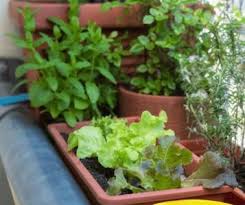The Best Soil Mix for Balcony Vegetable Gardening: A Complete Guide
Growing vegetables on your balcony starts with one crucial element: the right soil mix. Unlike traditional gardening, container vegetables depend entirely on the growing medium you provide. This comprehensive guide reveals the ideal soil composition for thriving balcony-grown vegetables and how to create the perfect blend for your urban garden.
Why the Right Soil Matters for Balcony Gardens
Container vegetables face unique challenges that make soil selection critical:
- Limited root space requires optimal nutrition in a confined area
- Drainage issues can lead to root rot in poor-quality mixes
- Frequent watering leaches nutrients faster than ground soil
- Weight considerations matter for balcony structures
Components of the Perfect Balcony Vegetable Soil Mix
1. Base Ingredients (The Foundation)
Potting Mix (60-70%)
- Provides structure and aeration
- Look for mixes labeled for containers
- Avoid garden soil (too dense for containers)
Compost (20-30%)
- Adds nutrients and beneficial microbes
- Use well-aged compost to avoid burning plants
- Vermicompost works exceptionally well
2. Aeration Amendments
Perlite or Vermiculite (10-20%)
- Prevents compaction
- Improves oxygen to roots
- Helps regulate moisture
Coconut Coir (Optional 10%)
- Excellent water retention
- Sustainable alternative to peat moss
- Improves soil texture
3. Nutrient Boosters
Worm Castings (5-10%)
- Gentle, slow-release fertilizer
- Enhances soil biology
Balanced Organic Fertilizer (As directed)
- Look for 5-5-5 or similar ratio
- Provides essential NPK nutrients
Specialized Mixes for Different Vegetables
1. Leafy Greens (Lettuce, Spinach, Kale)
- Lighter on compost (20%)
- Extra vermiculite for moisture retention
- pH 6.0-7.0
2. Fruiting Vegetables (Tomatoes, Peppers, Eggplant)
- Richer compost blend (30%)
- Additional calcium source (crushed eggshells)
- pH 6.0-6.8
3. Root Vegetables (Radishes, Carrots, Beets)
- Extra perlite for loose texture
- Reduced compost (15%) to prevent forking
- pH 6.0-7.0
How to Mix Your Own Balcony Garden Soil
Basic Recipe:
- 3 parts quality potting mix
- 1 part compost
- 1 part perlite
- ½ part worm castings
- Handful of organic fertilizer
Mixing Instructions:
- Combine dry ingredients in large container
- Moisten slightly before planting
- Store unused mix in airtight container
Pre-Mixed Soil Options
For those who prefer ready-made solutions:
- Espoma Organic Potting Mix – Contains mycorrhizae
- FoxFarm Ocean Forest – Rich blend with earthworm castings
- Pro-Mix Organic Vegetable Mix – Professional-grade formula
Soil Maintenance for Container Vegetables
1. Seasonal Refresh
- Replace top 2-3 inches each season
- Full soil replacement every 1-2 years
2. Fertilization Schedule
- Liquid fertilizer every 2-3 weeks
- Top-dress with compost monthly
3. Moisture Management
- Check soil daily in hot weather
- Mulch surface to reduce evaporation
Common Soil Mistakes to Avoid
- Using garden soil – Too dense, may contain pests
- Over-fertilizing – Can burn plant roots
- Poor drainage – Leads to root rot
- Ignoring pH – Affects nutrient availability
Troubleshooting Soil Problems
Problem: White crust on soil surface
Solution: Leach salts with thorough watering; reduce fertilizer
Problem: Fungus gnats
Solution: Let soil dry between waterings; use yellow sticky traps
Problem: Compacted soil
Solution: Refresh with aeration amendments; avoid stepping on containers
Final Thoughts
The perfect soil mix transforms balcony vegetable gardening from frustrating to flourishing. By creating a light, nutrient-rich, well-draining medium tailored to your plants’ needs, you’ll enjoy bountiful harvests in even the smallest urban spaces.
